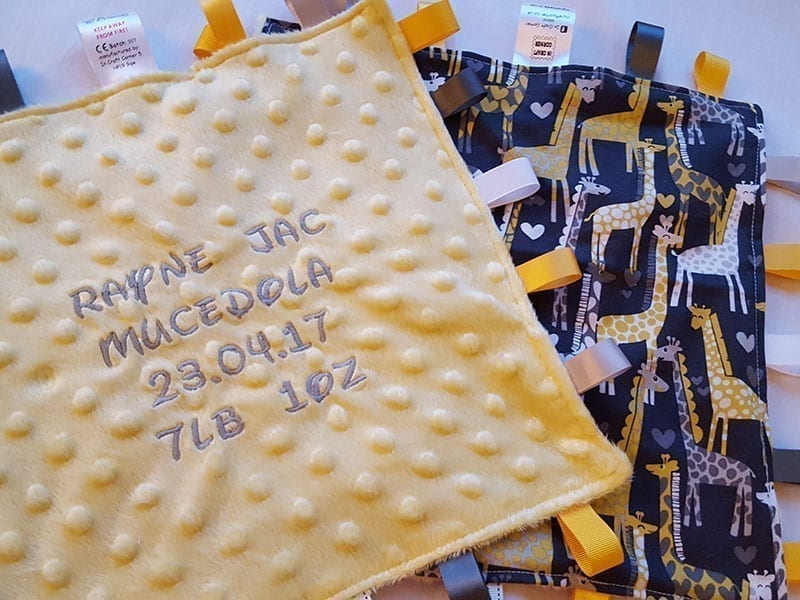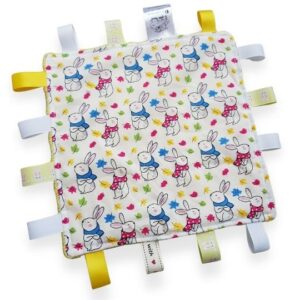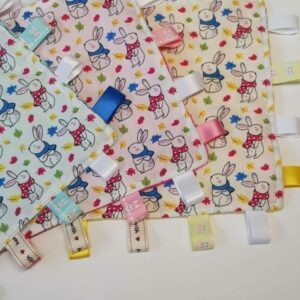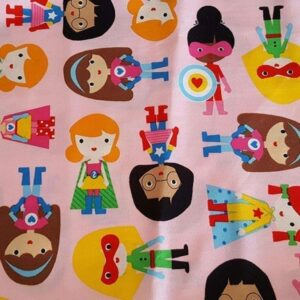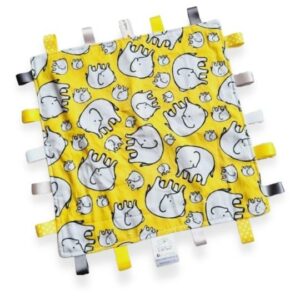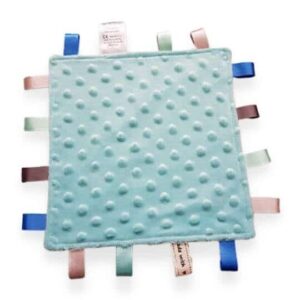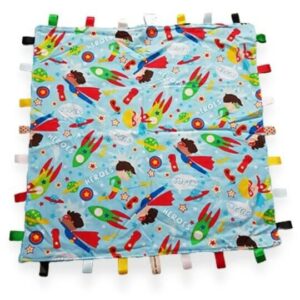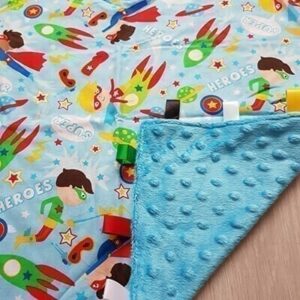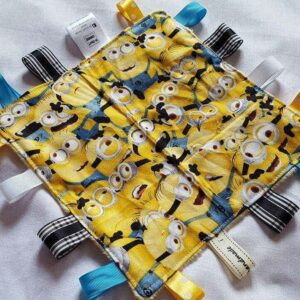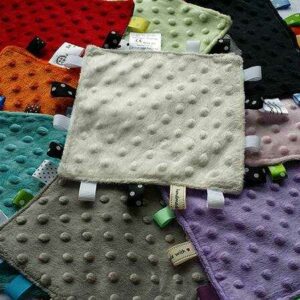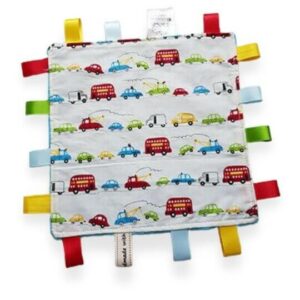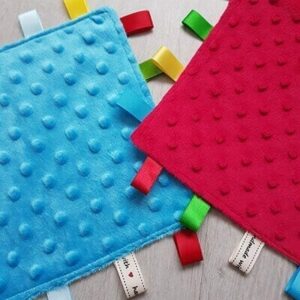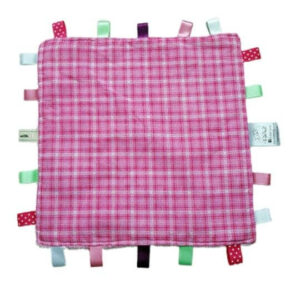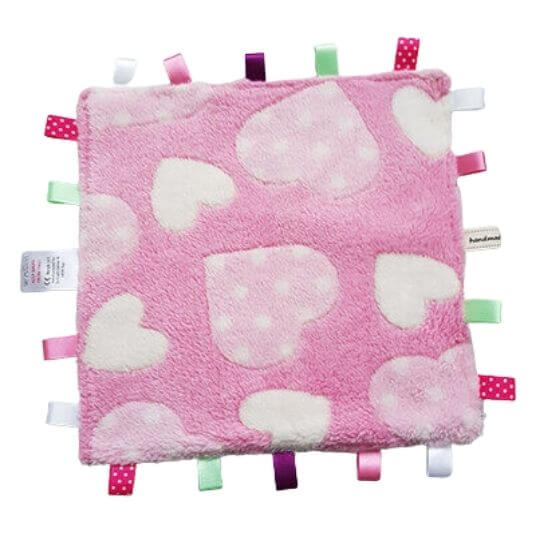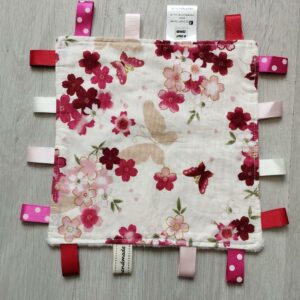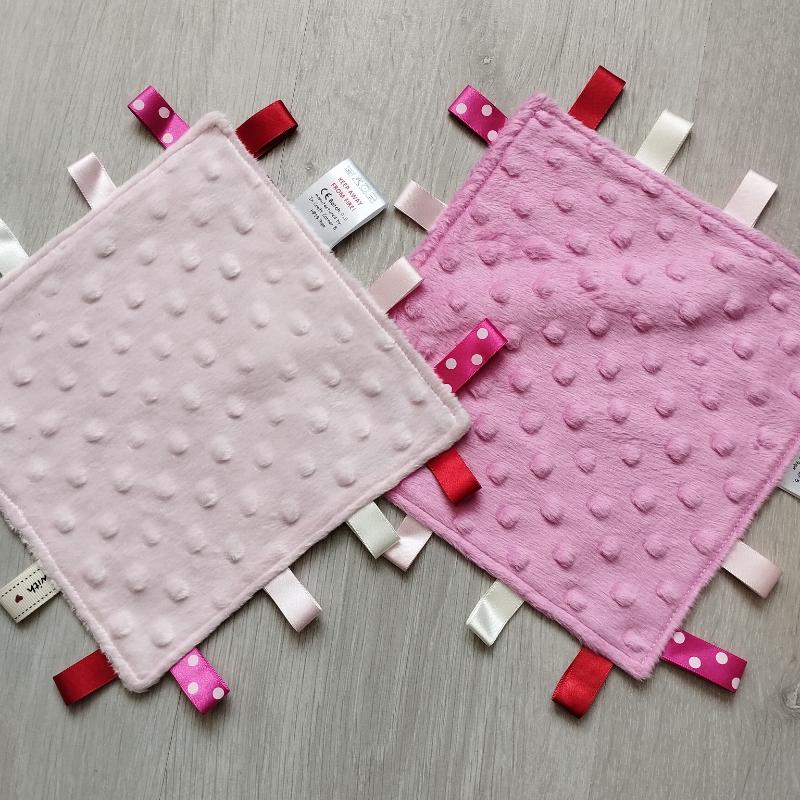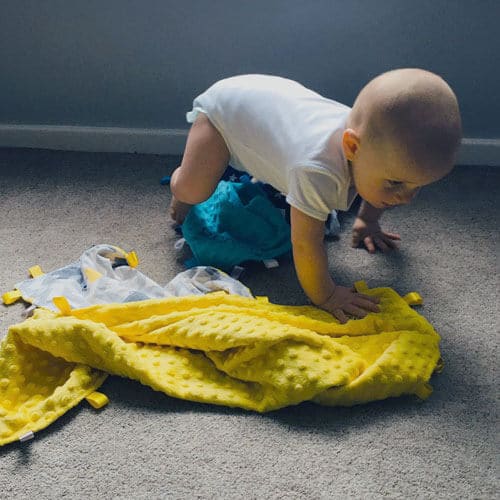
The Benefits of a Sensory Blanket
Kids have many toys they play with over their first year. Some they get more attached to than others. Often one of the things they all have is a tag blanket, muslin or blankie that they can not be parted with. They have to keep it close by at all times.
It becomes a main part of their day routine, finding it comforting and reassuring to have to hand. Their sensory blanket helps them explore different colours and textures and learn about the world around them. It can also benefit a child’s cognitive, language, and social-emotional development.
You’ll often see them with colourful designs and bright colours. This can help them with visual identification and colour vocabulary.
A sensory tag blanket offers babies and children ribbons and tags that they love to stroke and run on their face. This feeling helps them to feel safe and reduce the anxiety they are feeling. Often used as a sleeping aid, it can help them to self soothe and fall asleep easier.
Kids can find imaginative creative ways to use their tag blanket. A firm favourite for younger ones is to play peekaboo or use it to cover certain toys they need to find. They won’t be short of items on what it will turn into next.
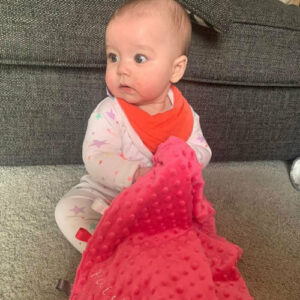

Sensory blanket for older children
A sensory blanket can also be beneficial to children with autism or other sensory processing disorders. Tag blankets aren’t limited to babies and toddlers. Older children can use a sensory blanket to regulate their own anxiety and use them in a similar way they would a fidget toy. Not to be confused with the weighted blankets that have their own benefits.
If you have a school age child, they may want something that is small enough to fit into their pocket that they can rub when they need to. I have a range of smaller pocket tags fit for this purpose.
In recent years they are becoming popular with adults with dementia. They can sit for hours with a sensory blanket and hold it to bring them comfort. Giving their hands something to fit with.

